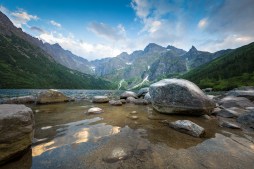Understanding the Forces Behind the Evolution of Natural Landscapes
Natural landscapes are dynamic and ever-changing systems shaped by a myriad of forces over time. Understanding how these landscapes evolve is crucial for appreciating their beauty, diversity, and ecological importance. This article delves into the various processes that contribute to the evolution of natural landscapes, from geological forces to climatic changes.
Geological Forces: The Foundation of Landscapes
The evolution of natural landscapes begins deep within the Earth’s crust. Geological forces such as tectonic plate movements play a significant role in shaping landforms. These movements can create mountains, valleys, and rift zones, contributing to the physical structure of our planet. For instance, the collision between tectonic plates can lead to uplift and mountain formation, while erosion gradually shapes these features into what we see today.

Erosion and Weathering: Sculptors of Terrain
Once landforms emerge from geological processes, they become subject to erosion and weathering. Water, wind, ice, and temperature variations work relentlessly on rocks and soil to break them down over time. Rivers carve out valleys through continuous flow; glaciers grind down mountainsides during glacial periods; wind shapes deserts by moving sand particles around. Each method contributes uniquely to landscape evolution by altering existing structures.
Climate Change: A Catalyst for Transformation
Climate plays a pivotal role in landscape evolution as well. Changes in temperature and precipitation patterns directly influence vegetation cover, soil formation processes, and erosion rates. For example, during warmer periods known as interglacials, increased rainfall can lead to more lush environments which may later be transformed into arid landscapes as climates shift toward dryness or cooling phases.
Human Impact: Altering Natural Landscapes
In recent centuries, human activities have significantly impacted natural landscape evolution. Urbanization introduces concrete jungles where forests once stood; agriculture alters soil composition; mining strips away layers of earth that took millennia to form. These actions not only modify physical landscapes but also disrupt ecosystems and biodiversity found within them—highlighting the need for sustainable practices that consider long-term impacts on natural settings.
Preserving Landscape Evolution: A Call for Awareness
Understanding how natural landscapes evolve underscores the importance of conservation efforts aimed at preserving these dynamic ecosystems. By recognizing our role in influencing landscape change—both positively through restoration efforts or negatively via destructive practices—we can foster an appreciation for nature’s intricate designs while ensuring future generations experience intact ecosystems rich with biodiversity.
In summary, the evolution of natural landscapes is a complex interplay between geological forces, weathering processes, climate fluctuations, and human activities. By comprehending these factors better—and their implications—we can make informed decisions about how we interact with our environment today while respecting its past transformations.
This text was generated using a large language model, and select text has been reviewed and moderated for purposes such as readability.


